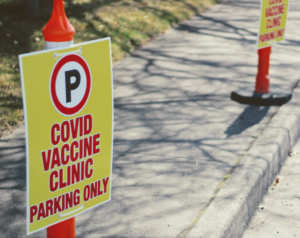COVID-19. It has been a grueling year of lockdowns, restraints and social distancing. However, after extensive research and some of the greatest minds coming together, a multitude of COVID vaccines have been created. In most countries there is only access to one, and it is controlled to give to those most at-risk, e.g. elderly or people with chronic health disease. In the United States, this is not the case. You can go to your local vaccination center and if you are 12+, you can get vaccinated, and do your part in stopping COVID-19 and returning to somewhat of a regular lifestyle. The dilemma is which vaccine to go for?

Currently, there are 3 FDA-approved vaccines. Major vaccines like Sinopharm have been snubbed out, after rigorous checking by FDA, the options you have are Pfizer, Moderna and Johnson and Johnson. What are the differences between them?
Pfizer was the first one to be enrolled publicly, releasing in mid-December, followed by Moderna and in late-February, J&J. They all vary in their approach to preventing COVID-19.
How do they work?
Pfizer and Moderna both tackle the vaccine using mRNA. It delivers genetic code to the cell to make the surface protein (spike) seen on the COVID virus. These proteins that are made with the mRNA activate the immune system to develop antibodies and other immunity weapons to fight it. This is a relatively new technology, while J&J looks at a tried and tested method, the same one they used to make their Ebola vaccines. It is called a viral vectored vaccine, using a harmless virus to carry the genetic code of the COVID-19 spikes and causing the body to respond and develop immunity.
Who is the target population?
Pfizer has recently been accepted to be enrolled to 12-18 year olds. Moderna and J&J are still waiting to be approved for teenagers. For teenagers, the only option is Pfizer, while adults who are 18 or over have the choice between Moderna and J&J.

How efficient is it?
Pfizer wins this one with an efficacy 95% slightly higher than Moderna with 94.1%. J&J has a much lower efficacy rate of 66.3% but this was because of its release timing. During this time, more dangerous variants of the disease appeared in England and Europe and J&J had to take them into account. As well as that the Phase 3 trial aims were different. Pfizer and Moderna both only looked at asymptomatic and mild cases of COVID to administer their vaccine, while J&J focused on moderate to severe, leading to a lower efficacy rate. However, Pfizer has been proven to be one of the most effective for all ages and severities.
One or two doses? How is it stored?
This belongs to J&J. J&J benefits from 2 things. It does not require expensive fridges and cold temperatures to be preserved, and it can be stored at normal refrigerator temperatures. The Moderna and Pfizer options, meanwhile, must be stored at subzero temps, -4°F and -94°F , until they’re ready to be used. As well as that, J&J benefits from only one dose. If you have a packed schedule, J&J adheres to your needs and is sometimes the most widely available one, due to the ease in storage. Pfizer and Moderna both need 2 shots, Pfizer needs an interval of 21 days while Moderna needs 28 days in between the 2 doses.

What are the side effects?
The side effects do not indicate that something is wrong with the vaccine, it is a natural body response when creating antibodies. The most common side effects are “injection site pain, fatigue, headache, muscle pain, and joint pain.” It has been seen that Pfizer and Moderna lead to more severe side effects due to their higher efficacy and the mRNA present, with a chance of getting anaphylaxis, but is often due to chronic allergies and previous episodes. J&J also has a severe problem. It has led to blood clotting and low platelet levels, but all of these are very rare to occur, and often the most that happens is slight pain at the injection site and tiredness.
Many factors influence your choice of vaccine. If you are under 18, you have to get Pfizer, but if you are 18 and over you have a choice between all 3. In terms of efficacy, Pfizer, once again leads the bunch but also has a higher chance of stronger symptoms. J&J is good for those with tight schedules and those who want a vaccine that is the be-all and end-all, while Moderna remains a solid option for those looking for a mix of strong efficacy and weaker symptoms. In my opinion, (I am not a medical expert), I prefer the Pfizer vaccine because of its strong efficacy, global approval and the 2 doses are doable for my schedule. It also heavily depends on what options you have at your local hospital, but all of these are FDA approved and are effective against the virus. The key to remember is that vaccines are not the only solution, they need to be coupled with stringent mask-wearing and social distancing, to prevent spread and eventually, herd immunity can be achieved and life can return somewhat to what it was before.
By Hussam Waseem

